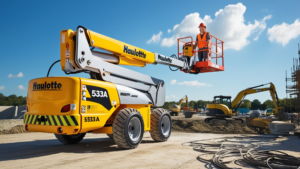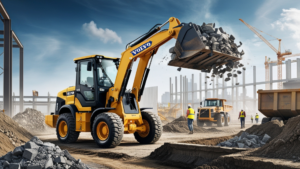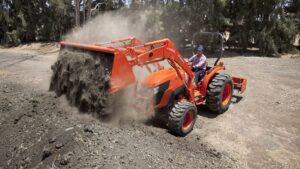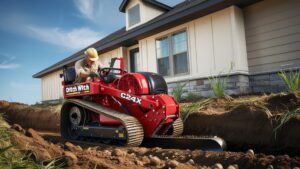Types of dump bodies are a critical part of many work trucks, especially in industries like construction, mining, landscaping, and agriculture. These durable, specialized truck bodies allow for easy loading, transport, and unloading of materials ranging from sand, gravel, and soil to larger rocks and debris. Dump bodies come in various types, materials, and configurations, each tailored to meet specific operational requirements and challenges. In this article, we’ll explore the different types of dump bodies, their specifications, applications, and key features to consider when choosing a dump body for your fleet.
1. What is a Dump Body?
A dump body is the rear portion of a truck that is designed to carry and dispose of loose materials. It is typically mounted onto a truck chassis and equipped with hydraulic systems that allow it to lift from one end, causing the materials inside to “dump” out of the other end. Dump bodies come in many sizes and designs to accommodate different types of materials and operational needs.
Dump bodies are essential for construction and other heavy-duty industries, providing an efficient and reliable way to transport materials across short or long distances and deposit them at designated locations. The size, shape, and material of the dump body can vary based on factors such as load weight, type of material, and specific industry needs.
2. Types of Dump Bodies
There are several types of dump bodies, each suited for different applications and materials. The most common types include:
- Standard Dump Bodies: These are traditional dump bodies often seen on heavy-duty trucks. They consist of a rectangular bed with high sidewalls to contain bulk materials. Standard dump bodies are versatile and commonly used in construction and roadwork for transporting sand, gravel, and asphalt.
- Side Dump Bodies: Side dumps are equipped with a mechanism that allows them to tilt to either side for unloading. This feature is ideal for areas with limited rear space, enabling quick unloading on the side without needing to back up. Side dump bodies are frequently used for projects with narrow unloading zones or where faster unloading is necessary.
- Bottom Dump Bodies: These bodies have gates on the bottom that open to release the load downward. Bottom dump bodies are particularly useful for distributing materials in a controlled manner, such as spreading gravel or sand along a road surface. They are often found in paving and road construction.
- Transfer Dump Bodies: A transfer dump body has a removable trailer that is loaded into the truck bed for transport. Upon reaching the destination, the trailer is released and unloaded, providing additional hauling capacity without sacrificing mobility. These are often used in high-capacity applications like large construction sites or long-distance hauling.
- Semi-End Dump Bodies: Similar to standard dump bodies, semi-end dumps are used on semi-trucks, with a pivoting point at the back. These are popular for transporting heavier loads over long distances, often used in industries where materials need to be moved from mines or quarries to processing sites.
3. Materials Used in Dump Bodies
Dump bodies are made from different materials to meet varying needs for durability, weight, and cost-effectiveness. Common materials include:
- Steel: Steel dump bodies are extremely durable and suited for heavy-duty applications. They can withstand abrasion and the impact of rough materials like rocks, concrete, and asphalt. However, steel bodies are heavier, which can affect fuel efficiency and load capacity.
- Aluminum: Aluminum dump bodies are much lighter than steel, which allows for increased load capacity and fuel efficiency. They are corrosion-resistant and suitable for carrying lighter materials like sand, dirt, and agricultural products. Aluminum dump bodies are popular in landscaping and agriculture but may not withstand the same level of impact as steel.
- Composite Materials: Composite dump bodies combine various materials like steel, aluminum, and polymers to balance weight and durability. These are lighter than steel and can handle a variety of materials, making them versatile and ideal for operators seeking a balance between strength and fuel efficiency.
- High-Tensile Steel: Some manufacturers use high-tensile steel for dump bodies, which offers greater strength with less weight compared to standard steel. This option provides the durability of steel while improving load capacity and fuel efficiency, making it a popular choice in construction and mining.
4. Specifications to Consider
When choosing a dump body, several key specifications are essential to ensure the truck meets the operational needs and can handle the intended materials effectively:
- Payload Capacity: The payload capacity of a dump body determines the maximum weight it can carry. Capacities typically range from 5 tons for small trucks to 40 tons for larger trucks. The required capacity will depend on the type of materials you plan to haul and the truck’s configuration.
- Dump Angle: The dump angle determines how effectively the load is discharged. Most dump bodies have angles between 45 to 60 degrees, with steeper angles allowing for faster unloading, especially with sticky materials like clay or wet sand.
- Bed Dimensions: The length, width, and height of the dump body should align with the intended material and volume. Larger beds allow for bulkier loads but may add to the vehicle’s overall weight, reducing load capacity and fuel efficiency.
- Side Wall Height: High side walls are essential for transporting loose materials, while lower walls are suitable for hauling items that don’t require containment. Adjustable or drop-down sides are also available to improve loading efficiency.
- Hydraulic System: The hydraulic system is responsible for raising and lowering the bed. Dump bodies come with single-stage or multi-stage hydraulic systems, with multi-stage systems offering greater lifting power. Choosing the right system ensures reliable dumping performance and increases the bed’s durability.
5. Applications of Dump Bodies
Dump bodies are designed for various industries and applications, each requiring specific features and capabilities:
- Construction and Demolition: Dump bodies are commonly used to transport materials such as gravel, sand, dirt, and concrete debris. Standard and transfer dump bodies are widely used on construction sites, where they help with both bulk material delivery and waste removal.
- Mining and Quarrying: Heavy-duty dump bodies with high payload capacity and durable materials like steel or high-tensile steel are essential in the mining industry. These trucks transport ore, stones, and other raw materials from the extraction site to processing plants.
- Landscaping and Agriculture: Aluminum or composite dump bodies are ideal for landscaping and agricultural applications, as they offer a lightweight solution for hauling soil, mulch, and harvested crops. Bottom dump bodies are also popular in agriculture for spreading materials.
- Road Construction and Paving: Bottom dump bodies are well-suited for road construction, where materials like sand, gravel, and asphalt need to be spread evenly. These trucks allow for precise material distribution, which is crucial for building smooth, even surfaces.
- Waste and Recycling: Some dump bodies are specifically designed for waste management, where they transport large volumes of waste to landfills or recycling centers. Side dump bodies are often used in recycling due to their easy unloading capability.
6. Features and Innovations in Dump Bodies
Dump bodies have seen technological advances in recent years, aimed at improving efficiency, durability, and safety:
- Automated Tarping Systems: Automated tarp systems cover the load securely, reducing spillage and improving safety on the road. They also protect materials from weather, which is useful when hauling sand, dirt, or similar substances.
- Load-Sensing Hydraulic Systems: Load-sensing technology in hydraulic systems helps optimize fuel consumption and adjust the lifting power based on the load weight, which enhances efficiency and prolongs the life of the hydraulic system.
- Corrosion-Resistant Coatings: Many dump bodies now come with corrosion-resistant coatings or liners, which protect against wear from abrasive materials. This feature is especially useful when transporting salt, chemicals, or other corrosive substances.
- GPS and Telematics: GPS systems and telematics can monitor truck performance, track location, and provide maintenance alerts, helping operators and fleet managers optimize their operations and reduce downtime.
Conclusion
Dump bodies are versatile, robust solutions that serve essential roles across multiple industries, from construction and mining to agriculture and waste management. The type, material, and specifications of the dump body play crucial roles in determining how efficiently it handles specific tasks. By understanding the unique requirements of their operations and the features offered by different dump bodies, businesses can choose configurations that maximize efficiency, reduce operating costs, and ensure long-term durability. As technology continues to advance, dump bodies are evolving to meet the demands of modern work environments, providing better safety, operational efficiency, and environmental sustainability.




